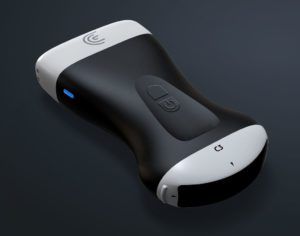We’re pleased to announce, in conjunction with the launch of our new website, Clarius has put together technical white papers to help users get a feel for what goes on under the hood of a Clarius scanner, and why we pride ourselves on the image quality attained in a device weighing around a pound.
Ultrasound image quality and capabilities have increased dramatically over the last 20 years. The first Clarius white paper, Achieving High-end Image Quality on a Handheld Ultrasound, focuses on how we continue to improve our scanners’ image quality and maintain a leading role in the portable ultrasound market.
Piezoelectric technology is what drove the progression of diagnostic ultrasound over 50 years ago, when researchers started developing ultrasound B-Mode and Doppler scanners. That innovation continues today, with higher bandwidth, higher frequency, and more durable materials. At Clarius, we take advantage of these advancements by integrating the technology as a core component of our ultrasound ecosystem, which includes scanners, a mobile app, and a Cloud platform.
Piezoelectric technology and other piezoelectric compounds have been used for a long time, and are still state-of-the-art for ultrasound imaging,” says Laurent Pelissier, CEO. “Though not all materials are created equal, we work with partners who have decades of experience building ultrasound transducer arrays. We’ve successfully integrated that technology into our production processes to create high-quality transducers in relatively high volumes.”
The paper explains how Clarius scanners use 192 elements, multiple parallel beamformers, and other optimized algorithms running on a System-On-Chip (SoC) to achieve image quality comparable to higher-end cart-based ultrasound systems that contain much more electronics.
It’s unheard of to have an entire ultrasound system squeeze in 192 elements, as well as achieve the level of imaging that we do, while weighing less than 500 grams,” says Dave Willis, Chief Strategy Officer. “Most laptop styles and even some larger cart systems still use 128 elements, while most handheld ultrasound devices currently on the market struggle to go beyond 64 elements.”
Because element count is so tightly correlated with lateral resolution, Clarius doesn’t compromise in the design of its systems. Clarius devices also digitize at 60 Mhz. This makes it an extremely competitive system for higher frequency imaging, as it requires excellent axial resolution that only a high sampling rate can achieve.
The Clarius L7, a high-frequency linear array scanner, is setting new standards for MSK imaging through our partnership with Arthrex, and high-quality breast imaging through our recent partnership with Hologic.
The Clarius App is available on both iOS or Android.














